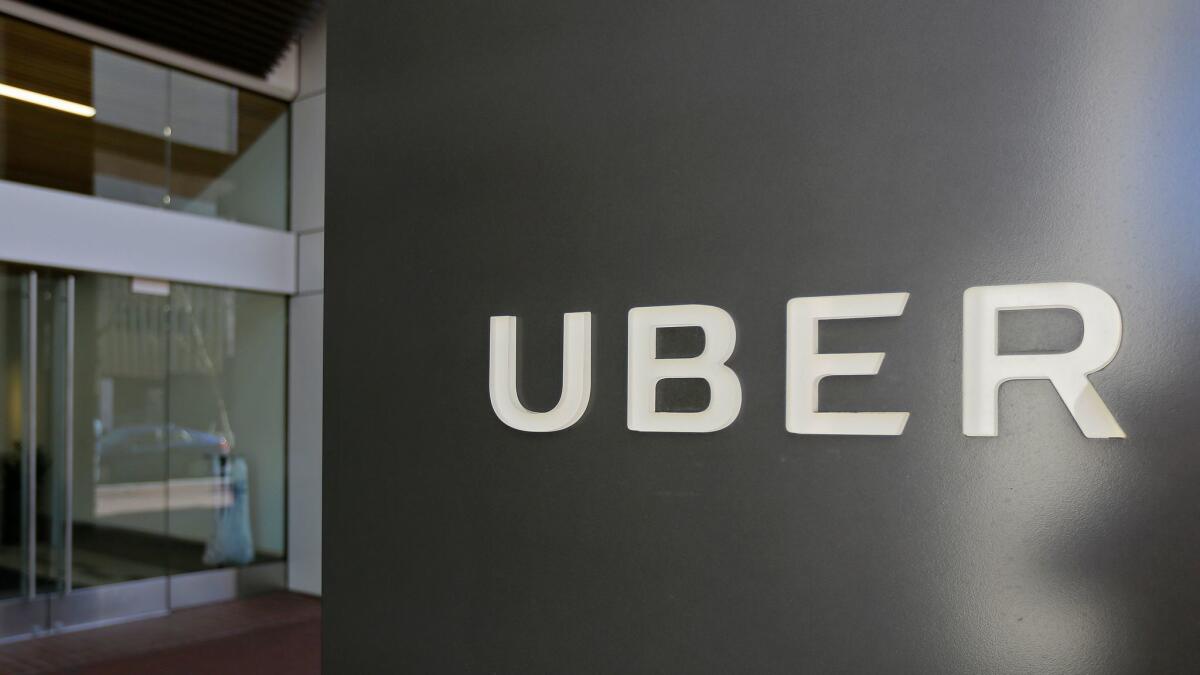Uber executive who worked on self-driving systems leaves the company

An Uber Technologies Inc. executive who worked on the ride-hailing company’s self-driving vehicle program has left the firm. He is the third executive to exit Uber in two months.
The San Francisco company confirmed the departure of Sherif Marakby, Uber’s vice president of global vehicle programs, who joined the company a year ago and left Monday.
Uber did not say why he left. The company said in a statement that Marakby’s “deep experience and knowledge of the automotive industry” helped Uber “tremendously in working to make self-driving cars a reality.”
Markaby’s departure comes shortly after Uber was sued in February by Waymo, Google’s self-driving vehicle spinoff, which alleged that Uber was using Waymo trade secrets smuggled away by a former employee, Anthony Levandowski, who now leads development of self-driving cars at Uber.
Uber said Marakby’s departure was not related to the lawsuit.
Waymo has asked for a freeze on Uber’s driverless car project until the case is settled. Uber told a judge that it did not use stolen trade secrets.
Marakby said in a statement that self-driving technology was one of the most interesting challenges he worked on in his career and that he was “grateful to have contributed to what will soon be a safer future for everyone.”
Marakby joined Uber after 13 years at Ford Motor Co., where he worked on hybrid technology and powertrain engineering, among other things, according to his LinkedIn page.
His departure is the latest in a string of executive exits over the last few months.
Uber’s head of communications left the company last week, and in mid-March, company President Jeff Jones resigned after just six months on the job.
The company’s senior vice president of engineering, Amit Singhal, was also reportedly asked to leave in February, five weeks after his hiring was announced. According to tech publication Recode, Uber Chief Executive Travis Kalanick sought Singhal’s resignation after learning that Singhal had not disclosed that a sexual harassment claim had been filed against him at his previous job at Google.
Singhal denied engaging in harassment and declared that he chose to leave Google.
Uber has had a rough year so far.
First, it experienced backlash stemming from Kalanick’s perceived cooperation with the Trump administration.
Then, a former employee alleged on her personal blog that she and other female engineers had been sexually harassed on the job, but Uber’s human resources department tried to cover it up. Kalanick said at the time that the blog post was the first time he had heard of the incident, and asked former U.S. Atty. Gen. Eric H. Holder Jr. to conduct an investigation. The company has said it will publicize the findings of that investigation.
Kalanick also came under fire when dashcam footage obtained by Bloomberg News showed him berating an Uber driver who had complained that fares were too low. Kalanick issued an apology to Uber employees, saying he must “fundamentally change as a leader and grow up.”
More recently, Uber came under fire when the New York Times reported that the company had used a software program that enabled it to thwart regulators who were working undercover looking for evidence that Uber was breaking local taxi laws. The company said it would kill the feature, nicknamed Greyball, less than a week after it was revealed.
Uber has also faced allegations of tracking its drivers with a secret software program known as Hell to determine whether those drivers were also working for rival ride-hailing firm Lyft.
Uber has taken steps to be more transparent about its inner workings. The company released diversity data in late March that showed that its global workforce is 64% male and that half of its U.S. employees are white, and that it has increased the hiring of women and racial minorities in the last 12 months.
Those numbers do not include Uber’s drivers, which the company classifies as independent contractors, rather than employees.
Twitter: @smasunaga
UPDATES:
1:40 p.m.: This article was updated with details of the dashcam video showing a confrontation between CEO Travis Kalanick and an Uber driver.
8:25 a.m.: This article was updated to include details of Waymo’s lawsuit against Uber.
This article was originally published at 7:35 a.m.







